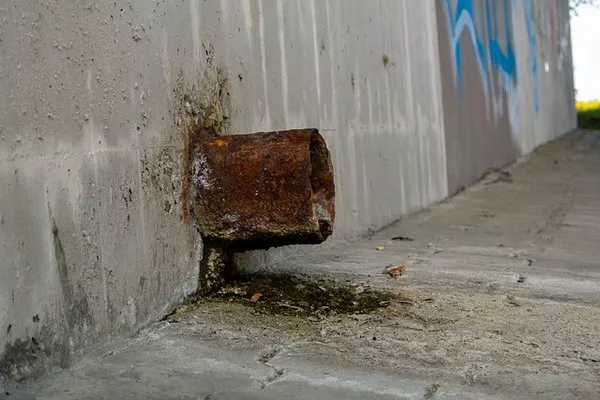The treatment of sewage water is a crucial aspect of modern urban living. It ensures the removal of contaminants and pathogens, transforming what was once considered waste into a valuable resource. But what happens to sewage water after treatment? This article delves into the intricate process of sewage water treatment and explores the diverse applications and benefits of treated wastewater.
Sewage Water Treatment: A Complex Process
Before we embark on the post-treatment journey, let’s first understand the intricacies of sewage water treatment. The primary objective of this process is to remove impurities and contaminants from wastewater, making it safe for disposal or reuse. This process typically involves several stages:
Preliminary Treatment: The journey begins at the wastewater treatment plant, where sewage water undergoes a preliminary screening. Large objects like branches and debris are removed to prevent damage to equipment.
Primary Treatment: In this phase, wastewater is settled in large tanks, allowing solids to settle at the bottom. This results in the separation of solid sludge from liquid effluent.
Secondary Treatment: Biological processes are employed in secondary treatment, where microorganisms break down organic matter in the wastewater. This stage significantly reduces the concentration of contaminants.
Tertiary Treatment: In some cases, additional treatment is necessary to meet stringent water quality standards. Tertiary treatment may involve advanced filtration, chemical treatment, or the use of ultraviolet (UV) light to disinfect the water.
Disinfection: Before discharge or reuse, the treated water is disinfected to eliminate any remaining pathogens or bacteria. Chlorination or UV disinfection are common methods.
Now that we’ve gained insight into the sewage water treatment process, let’s explore the fascinating journey of treated wastewater post-treatment.
1. Environmental Discharge
One of the primary purposes of treating sewage water is to protect the environment. Treated wastewater is often released into natural water bodies such as rivers, lakes, or oceans. This discharge must meet strict regulatory standards to prevent harm to aquatic ecosystems. The nutrients in treated wastewater, like nitrogen and phosphorus, can even enhance the growth of aquatic plants when released responsibly.
In some regions, treated sewage water is returned to the environment to supplement freshwater resources. This practice, known as indirect potable reuse, involves discharging treated wastewater into groundwater or surface water reservoirs. Over time, this treated water blends with natural sources and can be withdrawn for drinking water treatment.
2. Agricultural Irrigation
Treated sewage water is increasingly utilized for agricultural purposes. Known as reclaimed water or effluent, this resource can supplement traditional freshwater sources for irrigation. The nutrients present in treated wastewater, such as nitrogen and phosphorus, serve as valuable fertilizers for crops.
In regions facing water scarcity, agricultural reuse is an effective strategy for conserving freshwater resources. However, strict water quality standards must be adhered to in order to ensure that the reclaimed water does not harm crops or soil.
3. Industrial Processes
Many industries require vast quantities of water for their processes. Treated sewage water can serve as a reliable and sustainable source for these needs. Industries such as manufacturing, power generation, and even some high-tech processes rely on treated wastewater as a process water source.
The advantage of using treated sewage water in industrial applications lies in its consistent quality and availability. It can also reduce the demand on freshwater sources, helping to preserve these vital resources.
4. Groundwater Recharge
Groundwater, a critical source of freshwater for drinking and irrigation, can be recharged with treated sewage water. This process involves injecting treated wastewater into underground aquifers, allowing it to percolate through layers of soil and rock. Over time, the recharged water becomes part of the groundwater supply.
Groundwater recharge not only replenishes depleted aquifers but also acts as a natural filtration process. As water passes through various geological formations, contaminants are further removed, resulting in improved water quality.
5. Recreational Uses
Some communities have successfully utilized treated sewage water for recreational purposes. This includes creating artificial lakes or reservoirs where the treated water can be used for swimming, boating, or fishing. These water bodies are carefully monitored to ensure water quality and safety for recreational activities.
By repurposing treated wastewater in this manner, communities can provide additional recreational opportunities while conserving freshwater resources for essential needs.
6. Direct Potable Reuse (DPR)
Direct potable reuse represents the most advanced and innovative approach to utilizing treated sewage water. In DPR, highly treated wastewater is further purified to meet or exceed drinking water quality standards. This purified water is then introduced directly into the drinking water supply.
DPR has been implemented successfully in some areas, offering a sustainable solution to water scarcity. Advanced treatment technologies such as reverse osmosis, advanced oxidation, and microfiltration ensure that the water is safe for human consumption.
7. Environmental Benefits
The journey of treated sewage water extends beyond its immediate applications. It offers several environmental benefits:
Reduced Pollution: Properly treated wastewater reduces pollution in natural water bodies, safeguarding aquatic ecosystems.
Conservation of Freshwater: Reusing treated wastewater reduces the demand on freshwater sources, preserving them for future generations.
Nutrient Recycling: Nutrients in treated wastewater, like nitrogen and phosphorus, can be valuable for agriculture and contribute to soil health.
Energy Recovery: Some treatment processes can generate biogas, a source of renewable energy.
Conclusion
The journey of sewage water from being a pollutant to a valuable resource exemplifies the principles of sustainability and environmental responsibility. Through advanced treatment processes and innovative reuse strategies, treated wastewater has found diverse applications that benefit both human needs and the planet.
As communities worldwide face growing water challenges, the responsible management of treated sewage water offers a sustainable path forward. With ongoing advancements in treatment technology and a commitment to rigorous water quality standards, the potential for sewage water to address water scarcity issues is vast and promising.

